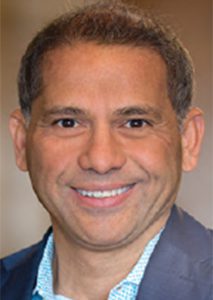STOP LOSS INSURANCE
Product use grows as smaller employers
get on board
By Len Strazewski
Times are changing and it’s not just the broad fields of politics or economics that are evolving. Thanks to more flexible and accessible stop loss insurance, a broader range of employers—smaller than ever—are saving money by self-insuring employee benefits.
And their agents and brokers are the key to matching employers up with new stop loss products like level funding plans, reference-based pricing and benefits captives.
A generation ago, only large corporations and public entities could afford to self-fund employee benefits. Self-insurance was a risk management tool that required large amounts of capital and access to claims management tools and administrative services only (ASO)contracts that insurers reluctantly made available for a fee.
To offset losses from catastrophic claims such as care for premature births or organ transplants, those employers might have purchased high-limit stop loss insurance, usually from reinsurance companies that traditionally provided financial backup to small health insurers.
But today, all of those resources are available to a wide range of employers—from large employers with thousands of employees to small ones with fewer than 100 workers—and insurers are providing stop loss insurance and related devices that protect these employers from excessive losses.
“When an employer and its benefits adviser can successfully calculate the employer’s ability to absorb risk, they can make good decisions about self-funding and purchasing stop loss insurance over that limit.”
—Robert Hatcher
Chief Underwriting Officer, Stop Loss
Liberty Mutual Insurance Co.
Demand for stop loss continues to grow. A recent market report from A.M. Best indicates that stop loss capacity has been growing steadily. “With more U.S. employers shifting to self-funded health plans to contain employee benefit costs, the stop loss insurance segment has experienced growth exceeding 10% in each of the past four years, reaching $25.2 billion in 2020,” the report says.
Self-funded insurance has become more attractive since the implementation of the Affordable Care Act, which has resulted in a major shift in the commercial health employer group insurance market—the largest market for health insurers, the report says.
The report also indicates that the medical loss ratio (MLR) decrease of 100 basis points to 81.7% in 2020 was less steep than the decrease in the fully insured market. More small groups have been purchasing stop loss insurance through level-funded products.
The amount of claims covered by stop-loss carriers also has been growing with the rising number of costly medical treatments, the report says, and stop-loss carriers’ strength in managing high-dollar medical claims efficiently and offering more customized financial solutions to employer groups will drive competition in the stop-loss market in the near to medium term.
In 1999, about 44% of employer-based health insurance involved some version of self-funding built on a base of stop loss insurance; but by 2020, self-insurers rose to about 67% of employers, according to Robert Hatcher, chief underwriting officer, Stop Loss, at Liberty Mutual Insurance Co. in Boston.
“What is the threshold of risk for an employer? That’s the key,” Hatcher says. “When an employer and its benefits adviser can successfully calculate the employer’s ability to absorb risk, they can make good decisions about self-funding and purchasing stop loss insurance over that limit.”
Since the COVID pandemic, health insurance claims have been on the rise, making risk assessment more complicated and demanding better data analysis and careful choice among self-funding packages, he says.
The employer can choose among a variety of new stop loss-driven products that packages capacity with pricing and claims management tools, adds Danielle Siering, vice president, Employer Stop Loss, Liberty Mutual.
Agents and brokers are trusted advisors to employers but also to insurers who help create plan designs to meet employer needs. I don’t usually see the 98% that goes right. I see the 2% that goes wrong and needs to be reworked.”
—Jay Ritchie
President
Tokio Marine HCC Stop Loss Group
“There’s a lot of new product differentiation that has really grown out of stop loss applications,” she says. They include level-funded programs that allow small employers to spread risk over time using stop loss programs, reference-based pricing that contains claims cost by linking payment to various indices, such as Medicare pricing, and various layering of stop loss in an aggregate, as well as specific claims levels.
Liberty Mutual’s latest complement to its stop-loss coverage is ProAct Solutions, which the carrier calls “a voluntary risk management program that complements each client’s individual stop-loss plan” with medical claims management, medical bill review and various levels of expertise that most small employers lack.
The service allows the insurer to deliver cost containment efforts as early as possible in the claims process and contain the growth of expenses, according to Siering.
How low can an insurer go in supporting self-funding with stop loss? Size isn’t really the issue, says Jay Ritchie, president of Tokio Marine HCC Stop Loss Group in Kennesaw, Georgia.
True self-insurance minimum size is mandated by state regulation, but various new products such as group captives and level funded plans create stability for all sizes of employers. Tokio Marine HCC, he says, is “the Swiss army knife” of stop loss and can shape stop loss capacity in various ways to meet the needs of customers.
However, the insurer is not just a seller of raw stop loss capacity. Ritchie says the company helps mold the capacity into products and designs that meet the unique needs of employers. The insurer collaborates with agents and brokers and third-party administrators to build self-insurance programs that are designed for each employer, using claims data that is unique to the particular employer, he says.
“Agents and brokers are trusted advisors to employers but also to insurers who help create plan designs to meet employer needs. I don’t usually see the 98% that goes right. I see the 2% that goes wrong and needs to be reworked,” Ritchie observes.
The insurer is also a resource for new and unusual claims, he says.
“It’s not just how you transfer risk, but how you manage the claims,” Ritchie says. New medical techniques such as gene therapy are a challenge for stop loss insurers who are part of the claims process.
According to Syed Rizvi, chief specialty insurance officer at Nationwide Insurance in Columbus, Ohio, “The largest growth in stop loss and related self-insurance products is for small to medium-sized employers.” Nationwide’s growth in stop loss has increased, approaching 10% annually.

“The largest growth in stop loss and related self-insurance products is for small to medium-sized employers.”
—Syed Rizvi
Chief Specialty Insurance Officer
Nationwide Insurance
And while the COVID pandemic has been a burden for the whole country, Rizvi says medical stop loss claims within the industry and at Nationwide have gone down moderately since 2020, as employees have avoided routine health appointments to stay away from potential infection and deferred elective procedures. This is expected to go back up because of pent-up demand.
Rizvi says Nationwide is focusing on small to mid-sized employers and has been continually active cultivating and supporting regional agents and brokers who have the best access to that market. Self-funded programs can reach down to employers with as few as 20 employees, but the insurer targets employers with 50 or more employees that can make best use of claims management tools.
The company also is providing stop loss capacity for other products, including group benefit captives and level-funded plans that allow small employers to access stop loss capacity to self-fund and spread risk, Rizvi adds.
Earlier this year, the insurer introduced D3 (data-driven decisions)— a new partnership with AccuRisk Solutions. The D3 plan provides data- driven management tools for small customers looking to take most advantage of self-funding, together with stop loss insurance from Nationwide.
AccuRisk’s D3 allows employers to create a customized plan that combines third-party administration, local medical networks, and pharmacy benefit management, together with stop loss capacity from Nationwide, Rizvi says.
Employers pay a monthly amount that includes administrative and vendor fees and one-twelfth of the annual maximum claims liability for D3, as well as stop loss premium. When claims are paid for a specific plan year, the system allows for unused claims reserves to be returned to the employer.
Rizvi says employers can use the data from the D3 system to refine the plan and stabilize claims for the coming year just as bigger self-funded employers do, containing costs over time.
Nationwide has also found a way to expand self-funded benefits and use stop loss capacity for supplemental benefits such as travel accident insurance and hospital indemnity insurance, Rizvi says. Under the Affordable Care Act, employers have opportunities to make other self-funded health-related benefits available as part of its programs.
Benefits captives are also popular with small employers, marshalling stop loss insurance for associations of employers and allowing them to spread the risk with group self-funding. Captives have been used to self-fund property/casualty risks and workers compensation for decades, but have become popular for small group health insurance since the Affordable Care Act.
These captives have been effective in bringing claims management to participants and kicking back premiums to their associations, but they need stop loss insurance to protect against catastrophic claims.
For example, Roundstone, a Lakewood, Ohio-based health insurer specializing in self-funded medical group captive solutions, reported a $5.9 million pro rata cash distribution to business owners across the nation that are currently participating in the company’s group medical captive. This amount is 40% higher than the prior year’s distribution of $4.2 million. The effectiveness of Roundstone’s pro-active, data-driven cost containment and wellness solutions contributed to the performance improvement, the company said in an April press release.
“We’re committed to helping both benefits advisors and employers thrive because we do things differently,” said Mike Schroeder, president and CEO of Roundstone. “Unlike the fixed-cost insurance world, our health plans offer flexibility, built-in cost containment programs, and data transparency. As a result, many of our advisors see higher-than-average close rates and retention. And we guarantee that employers in our captive will save money in the first five years, or we will make up the difference.”
Hundreds of small to mid-sized employers across a multitude of industries are currently enrolled in one of Roundstone’s group medical captives, saving an average of 20% annually, the company said.
The author
Len Strazewski is a Chicago-based writer, editor and educator specializing in marketing, management and technology topics. In addition to contributing to Rough Notes, he has written on insurance for Business Insurance, Risk & Insurance, the Chicago Tribune and Human Resource Executive, among other publications.





